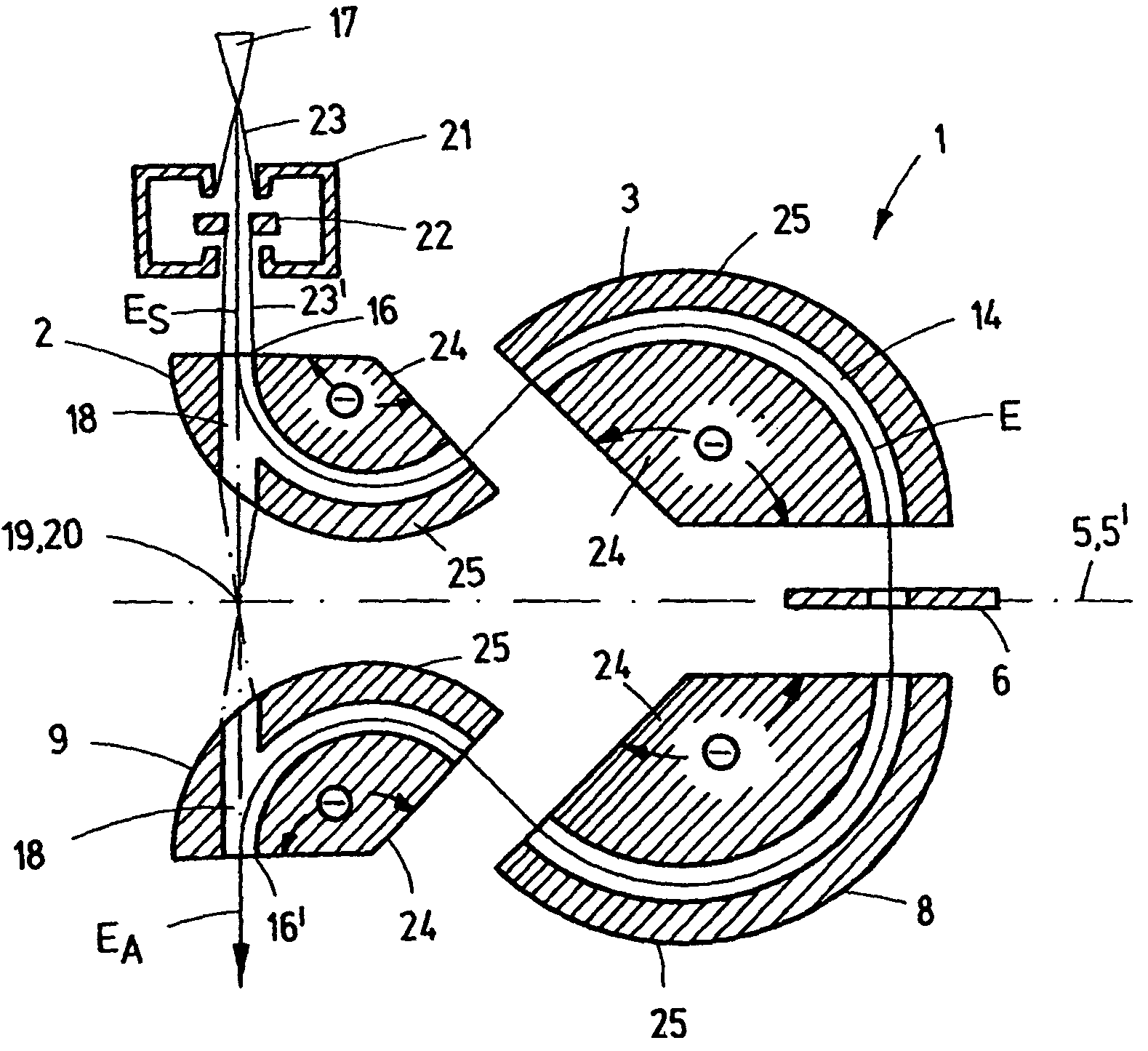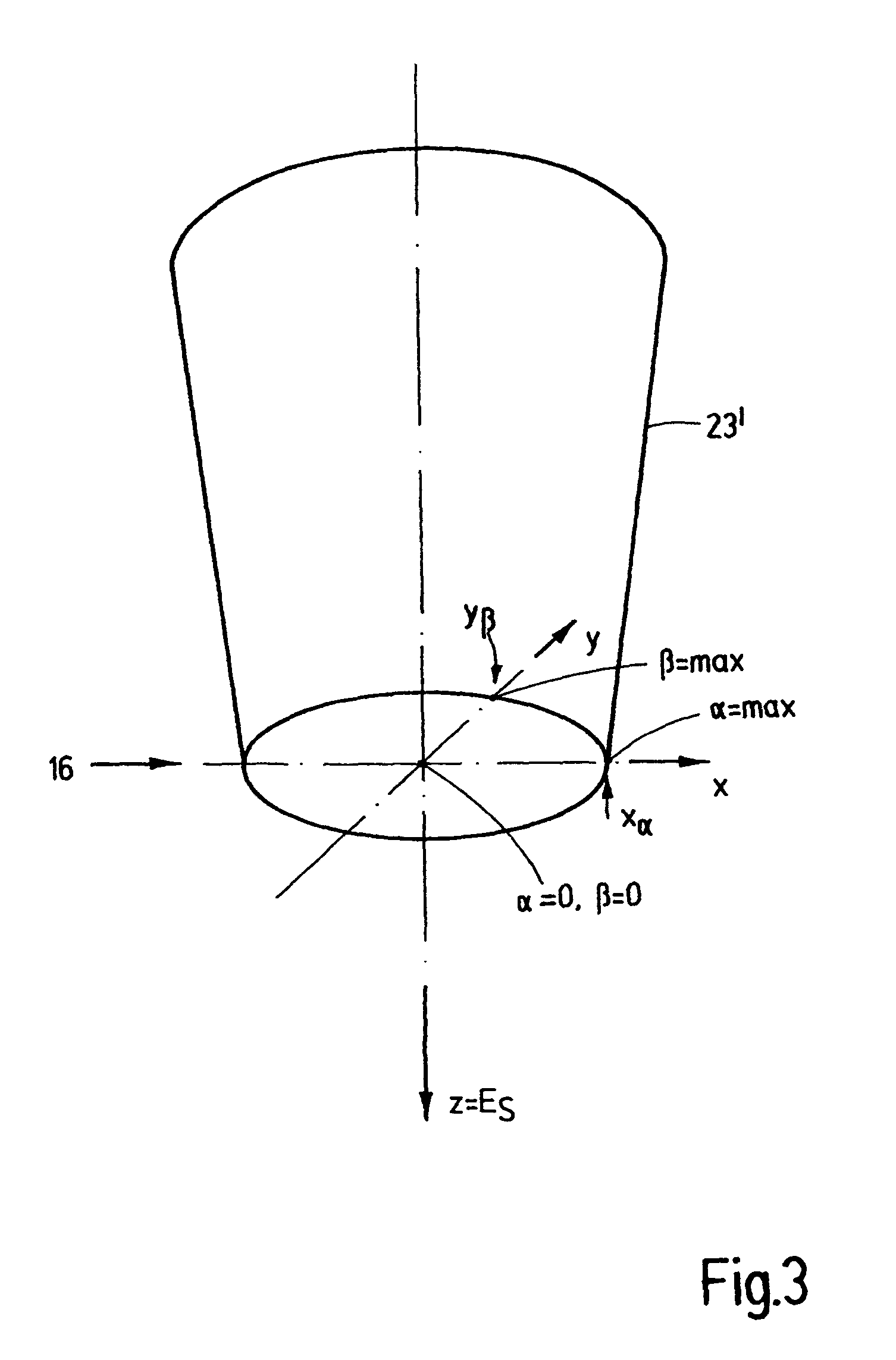Monochromator and radiation source with monochromator
a radiation source and monochromator technology, applied in the field of monochromators, can solve the problems of increasing the interaction of charged particles, increasing the size of virtual sources, and impairing the resolution of optics, so as to improve the yield of charged particles and improve the ability to control and calculate fringe fields
- Summary
- Abstract
- Description
- Claims
- Application Information
AI Technical Summary
Benefits of technology
Problems solved by technology
Method used
Image
Examples
Embodiment Construction
[0056]FIG. 1 shows a schematic diagram of an embodiment of a monochromator 1 having a simple construction in accordance with the invention. The particle current 23 of a radiation source 17 is thereby incident on the entry 16 of the monochromator 1 and is deflected by the deflecting field 2′ of a first deflection element 2 for generating a dispersion 4 (see below). This deflection is caused by an inner electrode 24 and an outer electrode 25 which delimit an arc-shaped deflection path 14. When the particle current 23 consists of electrons or negatively charged ions, the inner electrode 24 is positively charged and the outer electrode 25 is negatively charged. When the particle current 23 along the optical axis E of the monochromator 1, when deflected, is dispersely incident on the selection aperture 6 disposed in the plane 5, only the desired energy interval 7 is allowed to pass at that point, which is explained in more detail below. In order to eliminate again the dispersion 4, a fur...
PUM
 Login to View More
Login to View More Abstract
Description
Claims
Application Information
 Login to View More
Login to View More - R&D
- Intellectual Property
- Life Sciences
- Materials
- Tech Scout
- Unparalleled Data Quality
- Higher Quality Content
- 60% Fewer Hallucinations
Browse by: Latest US Patents, China's latest patents, Technical Efficacy Thesaurus, Application Domain, Technology Topic, Popular Technical Reports.
© 2025 PatSnap. All rights reserved.Legal|Privacy policy|Modern Slavery Act Transparency Statement|Sitemap|About US| Contact US: help@patsnap.com



